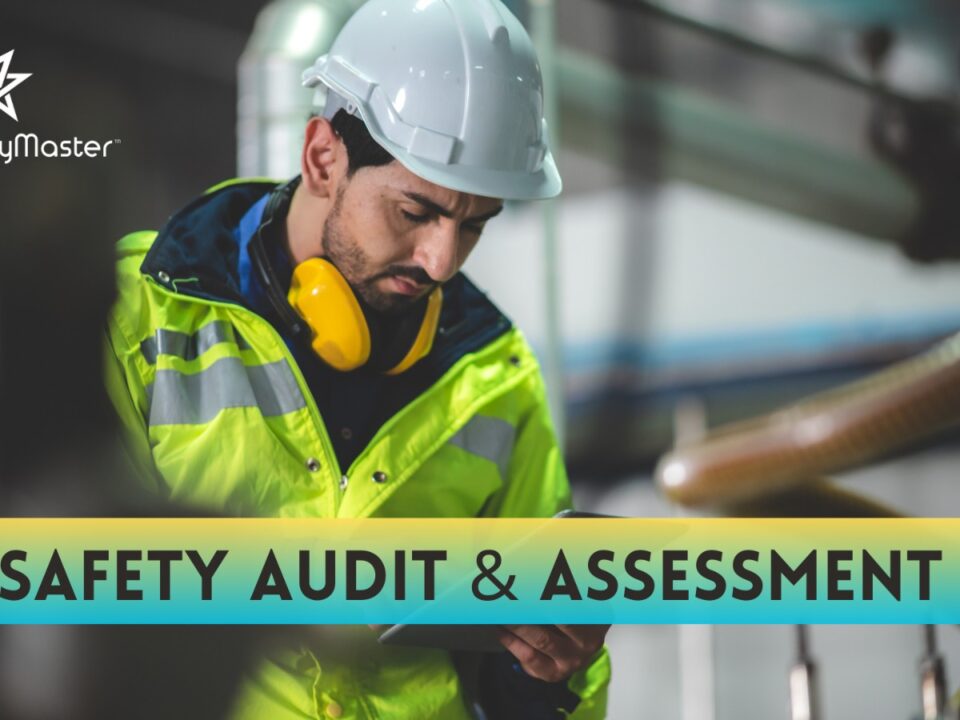A Cultural Shift towards Safety Excellence: How BBS Implementation Programs Drive Organizational Success

From Compliance to Excellence: How Behavior-Based Safety Training Transforms Organizations
October 11, 2023Comprehensive Electric Vehicle Manufacturing Facilities Safety Auditing
October 16, 2023In this article, we delve into the fascinating realm of safety excellence and its correlation with Behavioral-Based Safety (BBS) implementation programs. With a cultural shift towards a safer work environment, organizations are becoming increasingly proactive in embracing BBS methodologies to drive organizational success. Join us as we explore how BBS programs can revolutionize safety practices within your company, empowering your workforce and fostering a culture of continual improvement. Discover the key insights, strategies, and real-life success stories that will ignite your organization’s journey towards safety excellence. Get ready to embark on a transformative path that promises enhanced productivity, reduced incidents, and a thriving workplace environment. Let’s pave the way to a safer tomorrow together!
Introduction
Life is a delicate balance between progress and peril, where success and failure dance on the tightrope of safety. In an ever-evolving world, organizations face the challenge of navigating this precarious path while ensuring the well-being of their employees. Safety excellence has become an imperative goal, not only to protect human lives but also to foster organizational success. Enter Behavioral Based Safety (BBS) implementation programs – a catalyst for promoting a cultural shift towards safety excellence. These programs provide a structured framework that empowers organizations to identify and address potential hazards proactively, leading to safer working environments and increased productivity. Throughout this article, we will delve into the key components of BBS implementation programs, exploring how they drive organizational success by cultivating a culture of safety, developing effective policies and procedures, fostering strong communication systems, providing comprehensive training and education opportunities, implementing robust measurement and evaluation systems, promoting employee participation and involvement, overcoming challenges in implementation, as well as showcasing real-life case studies that exemplify the triumphs achieved through these programs
Understanding the Importance of Safety Excellence
In today’s ever-evolving workplace, safety excellence has emerged as a paramount concern for organizations across industries. The understanding of safety goes beyond mere compliance with regulations; it encompasses a holistic approach to ensuring the well-being of employees and the preservation of organizational assets. Safety excellence is not merely a goal but rather an ongoing journey that requires continuous dedication and improvement. Embracing safety excellence not only safeguards the physical health and psychological well-being of employees, but it also fosters a positive work culture. When employees feel safe and know that their organization prioritizes their welfare, they are more likely to be engaged, motivated, and productive. A robust commitment to safety instills confidence in both employees and stakeholders, enhancing the organization’s reputation as a responsible corporate citizen.
Furthermore, safety excellence has far-reaching implications for an organization’s bottom line. By preventing accidents, injuries, and property damage through proactive measures, organizations can significantly reduce costs associated with worker compensation claims, legal liabilities, medical expenses, equipment repairs, and production downtime. Investing in safety not only protects human lives but also safeguards financial resources that can be channelled towards innovation and growth initiatives.
In essence, striving for safety excellence is not just about adhering to regulatory requirements; it is an ethical responsibility towards the well-being of individuals who contribute their skills to organizational success. Through dedication to comprehensive safety programs like Behavioral Based Safety (BBS) implementation programs—highlighted later in this article—organizations can create an environment where all stakeholders thrive together harmoniously while achieving remarkable levels of productivity and operational efficiency.
The Role of Behavioral Based Safety (BBS) Implementation Programs
In the realm of organizational safety, Behavioral Based Safety (BBS) implementation programs play a pivotal role in driving excellence. BBS focuses on understanding and modifying employee behavior to ensure a safe and secure work environment. By acknowledging that human actions contribute significantly to safety outcomes, BBS empowers organizations to address the underlying causes of accidents and incidents. BBS implementation programs utilize various strategies to influence behavior positively. This includes establishing clear expectations, providing feedback, and offering reinforcement for safe practices. By incorporating a proactive approach that focuses on observation and analysis of employee behavior, organizations can identify potential risks before they escalate into accidents. Moreover, BBS implementation programs foster a sense of personal responsibility among employees for their own safety as well as the safety of their colleagues.
These programs function as catalysts for cultural change within organizations by fostering collective accountability and shared values related to safety. Through ongoing training and communication initiatives, BBS promotes open dialogue about hazards, encourages reporting of near misses, and seeks continuous improvement in safety practices. Ultimately, by emphasizing behavioral change alongside technical measures, BBS implementation programs instill a culture where individuals take pride in maintaining a safe work environment—a culture that has far-reaching benefits for both employees’ well-being and organizational success.
Key Components of BBS Implementation Programs
Key Components of BBS Implementation Programs:1. Cultivating a Culture of Safety: In the pursuit of safety excellence, organizations must foster a culture that values and prioritizes safety. This involves creating an environment where safety is deeply ingrained in every aspect of the organization’s operations. It requires strong leadership commitment, effective communication, and employee engagement. By encouraging open dialogue, recognizing safety achievements, and providing resources for continuous improvement, organizations can establish a culture where safety becomes second nature to everyone involved.
2. Developing Effective Safety Policies and Procedures: Clear and concise safety policies and procedures form the backbone of any successful BBS implementation program. These documents outline the organization’s expectations regarding safe practices and provide guidelines on how to minimize risks and prevent incidents. Well-crafted policies should align with industry standards, regulatory requirements, and best practices while being tailored to address specific hazards within the organization’s operations.
3. Building a Strong Communication System: Effective communication is vital for ensuring that safety messages are understood throughout the organization. A robust communication system should be established to facilitate timely dissemination of information related to hazards, incidents, near-misses, and corrective actions taken. This includes regular safety meetings, toolbox talks, bulletin boards displaying relevant information, as well as utilizing digital platforms for sharing updates across various departments or work locations.
By encompassing these key components within their BBS implementation programs, organizations lay a solid foundation for achieving safety excellence. A committed culture of safety serves as a powerful motivator for employees to actively participate in maintaining safe practices while effective policies provide necessary guidance. Furthermore, establishing efficient communication channels ensures that vital information is shared promptly across all levels of the organization – fostering a collaborative approach towards achieving organizational success in terms of improved safety performance
Cultivating a Culture of Safety
Cultivating a Culture of Safety: Fostering a culture of safety within an organization is vital to the success of any behavioral based safety (BBS) implementation program. It requires a collective commitment from every employee, from top-level management down to the front-line workers. This cultural shift instills a sense of responsibility and accountability in individuals, creating an environment where safety becomes second nature.
One effective way to cultivate this culture is by promoting open communication channels that prioritize safety discussions. Encouraging employees to voice their concerns and share their experiences can lead to valuable insights and innovative ideas for improving safety practices. By fostering an atmosphere where everyone feels comfortable speaking up about potential hazards or near misses, organizations can proactively address risks before they escalate.
Furthermore, incorporating safety into all aspects of daily operations reinforces its significance in employees’ minds. This can be achieved through regular safety meetings, toolbox talks, and the integration of safety considerations into performance evaluations. When employees see that their dedication towards maintaining a safe work environment is recognized and rewarded, it further motivates them to prioritize safety excellence.
By nurturing a culture where safety is embraced as a core value rather than merely complying with regulations, organizations lay the foundation for sustainable success in BBS implementation programs. When employees feel valued and empowered in their roles as proactive contributors to workplace safety, it not only reduces accidents but also boosts morale and productivity. In this way, cultivating a culture of safety becomes an investment that yields long-term benefits for both individuals and the organization as a whole – ensuring everyone returns home safely at the end of each day with renewed vigor for making their workplace even safer tomorrow.
Developing Effective Safety Policies and Procedures
Developing Effective Safety Policies and Procedures: In the realm of safety excellence, the development of robust safety policies and procedures is paramount. These serve as the backbone of a successful Behavioral Based Safety (BBS) implementation program, ensuring that all employees are aware of their roles and responsibilities when it comes to maintaining a safe working environment. A well-crafted safety policy sets clear expectations and standards, while procedures provide step-by-step instructions on how to carry out specific safety-related tasks.
When formulating safety policies, it is crucial to involve employees at all levels of the organization. By soliciting their input and insight, companies can tap into a wealth of knowledge about potential hazards and devise strategies to mitigate risks effectively. This collaborative approach not only fosters a sense of ownership among employees but also leads to more comprehensive policies that address real-world challenges.
Furthermore, effective safety procedures are detailed yet concise, providing employees with specific guidelines on how to perform tasks safely. Incorporating visual aids such as flowcharts or diagrams can enhance comprehension and ensure consistency in following established protocols. Regularly reviewing and updating these policies and procedures in response to changes in technology or industry best practices is also essential for keeping pace with evolving safety requirements.
In conclusion, developing effective safety policies and procedures is an integral part of driving organizational success through BBS implementation programs. By involving employees in this process and creating clear guidelines for safe practices, companies can lay a solid foundation for cultivating a culture of safety that permeates every aspect of their operations.
Building a Strong Communication System
Building a Strong Communication System: Effective communication is the lifeblood of any successful organization, especially when it comes to promoting safety excellence. In the pursuit of a cultural shift towards safety, it is imperative to establish a strong communication system that ensures timely and accurate transmission of critical information. This involves creating channels for open dialogue, fostering transparent communication practices, and encouraging active participation from all levels within the organization.
One key aspect of building a strong communication system is implementing regular safety meetings or toolbox talks. These gatherings provide an opportunity for employees to share their experiences, concerns, and suggestions related to safety matters. By creating a safe space for open discussion, organizations empower their workforce to actively contribute towards identifying hazards and developing strategies to mitigate risks.
Additionally, leveraging technological advancements can greatly enhance communication efficiency. Utilizing digital platforms or mobile applications allows for real-time reporting of incidents or near-misses, enabling prompt action and effective resolution. Moreover, these tools can facilitate the dissemination of safety-related updates such as new procedures or training materials, ensuring that everyone is well-informed and up-to-date.
By prioritizing effective communication within an organization’s safety framework, not only are potential risks identified and addressed promptly but also employee engagement flourishes. A culture rooted in open communication fosters trust between management and employees while empowering individuals to take ownership of their own safety as well as others’. It creates an environment where everyone feels heard and valued—a powerful catalyst for driving organizational success on the path toward safety excellence.
Training and Education for Safety Excellence
Training and Education for Safety Excellence: In order to achieve safety excellence, organizations must invest in comprehensive training and education programs that equip employees with the necessary knowledge and skills to identify, prevent, and respond to potential hazards. These programs should encompass a wide range of topics including risk assessment, hazard recognition, emergency preparedness, and safe work practices. By providing employees with relevant and up-to-date training, organizations empower their workforce to actively contribute to a culture of safety.
Engaging training sessions should go beyond mere theoretical instruction. They should incorporate interactive elements such as case studies, simulations, and hands-on exercises. This approach allows employees to apply their newfound knowledge in practical scenarios, strengthening their understanding of safety protocols while fostering a sense of confidence in their ability to handle potential risks.
Furthermore, ongoing education initiatives are crucial for keeping safety at the forefront of employees’ minds. Regular refresher courses help reinforce important concepts while also introducing new information or best practices. By continually investing in the growth and development of their workforce through robust training programs, organizations not only ensure compliance with safety regulations but also demonstrate a genuine commitment to the well-being and success of their employees.
Remember: A well-trained workforce is an empowered one – capable of safeguarding not only themselves but also their colleagues from harm’s way. By prioritizing comprehensive training and education initiatives that emphasize practical application alongside theoretical knowledge transfer, organizations can lay a strong foundation for achieving safety excellence throughout their operations.
Implementing Effective Measurement and Evaluation Systems
Implementing Effective Measurement and Evaluation Systems: An integral aspect of fostering safety excellence within an organization lies in the implementation of robust measurement and evaluation systems. These systems serve as the bedrock for assessing the efficacy of safety initiatives, allowing companies to identify areas that require improvement and celebrate successes. An optimally designed measurement system ensures that data is collected accurately, consistently, and comprehensively. It empowers organizations to monitor leading indicators, such as near misses or safety observations, which offer valuable insights into potential hazards before incidents occur.
Measurement systems should also encompass lagging indicators, such as injury rates or lost time incidents, providing retrospective analysis to gauge the effectiveness of implemented safety measures. By combining both leading and lagging indicators in a comprehensive evaluation framework, organizations can gain a holistic view of their safety performance. This enables proactive decision-making based on real-time data analysis, ensuring continuous improvement towards safety excellence.
Furthermore, effective measurement and evaluation systems foster a positive organizational culture by highlighting achievements and progress towards safety goals. Recognizing employees’ contributions through regular feedback channels further reinforces a sense of ownership for safety within the workforce. When employees realize their efforts are acknowledged and valued through an objective evaluation process, they are motivated to actively engage in creating safer work environments.
In summary, implementing effective measurement and evaluation systems is crucial for driving organizational success in terms of safety excellence. Such systems provide actionable data that allows leaders to make informed decisions while empowering employees with recognition for their contributions towards maintaining a safe workplace. By embracing these systematic approaches to measuring performance, organizations foster a culture where continuous improvement becomes ingrained in every aspect of operations – ultimately ensuring a brighter future with enhanced levels of workplace security for all.
Employee Participation and Involvement
Employee Participation and Involvement: In fostering a culture of safety excellence, employee participation and involvement play a pivotal role. When employees are actively engaged in safety initiatives, they become the driving force behind organizational success. This can be achieved through various means, such as establishing safety committees where employees from all levels contribute ideas and insights. Encouraging open dialogue between management and employees also creates an environment that fosters trust and collaboration.
By involving employees in the decision-making process regarding safety measures, organizations empower their workforce to take ownership of their own well-being and that of their colleagues. This level of involvement not only enhances safety awareness but also breeds a sense of collective responsibility. Employees who feel valued for their input are more likely to embrace safety protocols willingly, leading to increased compliance rates and reduced incidents.
Promoting employee engagement in safety initiatives can be accomplished through training programs that provide the necessary knowledge and skills for active participation. By offering comprehensive education on hazard identification, risk assessment, and incident reporting techniques, organizations equip their workforce with the tools needed to identify potential risks proactively. Moreover, recognizing and rewarding employee contributions further reinforces their sense of importance within the organization’s overall safety strategy.
By prioritizing employee participation in safety endeavors, organizations create a positive workplace culture where everyone feels invested in creating safer working environments. When employees actively engage with safety protocols, it strengthens teamwork, boosts morale, and ultimately drives organizational success towards achieving exemplary levels of safety excellence.
Overcoming Challenges in BBS Implementation
Overcoming Challenges in BBS Implementation: One of the key aspects of driving organizational success through Behavioral Based Safety (BBS) implementation programs is the ability to navigate and overcome the challenges that may arise. These challenges can vary from resistance to change, lack of employee engagement, or insufficient management support. However, with a strategic approach and a commitment to safety excellence, organizations can effectively address these hurdles and create a culture of safety.
When implementing BBS programs, it is essential to recognize that resistance to change is a common challenge. People often tend to cling to familiar routines and may be hesitant to adopt new safety practices. To overcome this challenge, organizations can invest in comprehensive training and education initiatives that not only educate employees about the benefits of BBS but also address their concerns and anxieties. By fostering open communication channels and ensuring that employees feel heard and valued, organizations can help alleviate resistance and encourage buy-in.
Another challenge lies in maintaining high levels of employee engagement throughout the implementation process. Employees might initially be enthusiastic about new safety initiatives but sustaining their involvement over time can be difficult. To tackle this issue, organizations should continuously foster a supportive environment where employees actively participate in safety activities such as hazard identification, reporting near-misses, or suggesting improvements. Recognizing individuals’ contributions through incentives or rewards can further enhance engagement levels.
Lastly, obtaining sufficient management support is crucial for successful BBS implementation. Managers play a pivotal role in driving cultural change within an organization by setting a positive example themselves. By visibly demonstrating their commitment to safety excellence through active participation in safety committees or resource allocation for training programs, managers inspire trust among employees while reinforcing the importance placed on safety
Case Studies of Successful BBS Implementation Programs
Case Studies of Successful BBS Implementation Programs: In the illustrious realm of safety excellence, tales abound of organizations that have achieved remarkable success through the implementation of Behavioral Based Safety (BBS) programs. Let us embark on a journey into these captivating narratives, where we witness the transformative power these programs possess.
Picture a manufacturing facility nestled amidst rolling hills, where accidents once lurked like shadows in the darkness. However, through the strategic implementation of BBS, this organization experienced a monumental shift towards safety excellence. Employees were empowered to identify potential hazards and intervene with confidence. With open lines of communication and robust training initiatives, they became guardians of each other’s well-being. As injuries reduced and productivity soared, an aura of optimism enveloped the entire workforce.
Now let us turn our gaze to a bustling construction site where BBS emerged as an emblem of transformation. The organization’s commitment to safety was unwavering as they implemented comprehensive policies and procedures. Through regular safety meetings and toolbox talks, workers developed an acute awareness that permeated their every action. This collective consciousness created a culture where safety was not merely a requirement but an intrinsic value shared by all. As accidents dwindled amidst rising productivity levels, job satisfaction reached unprecedented heights.
In conclusion, these case studies illuminate how successful BBS implementation programs can ignite profound cultural shifts within organizations across diverse sectors
Conclusion
In conclusion, the implementation of Behavioral Based Safety (BBS) programs is a pivotal step in achieving safety excellence within organizations. By cultivating a culture of safety, developing effective policies and procedures, establishing strong communication systems, providing comprehensive training and education, and implementing measurement and evaluation systems, organizations can create an environment where safety becomes a shared responsibility. With employee participation and involvement at the forefront, BBS programs have the potential to drive significant improvements in safety performance. As organizations continue to prioritize safety excellence, they pave the way for a brighter future where every individual feels empowered to contribute towards a safe and secure working environment.




